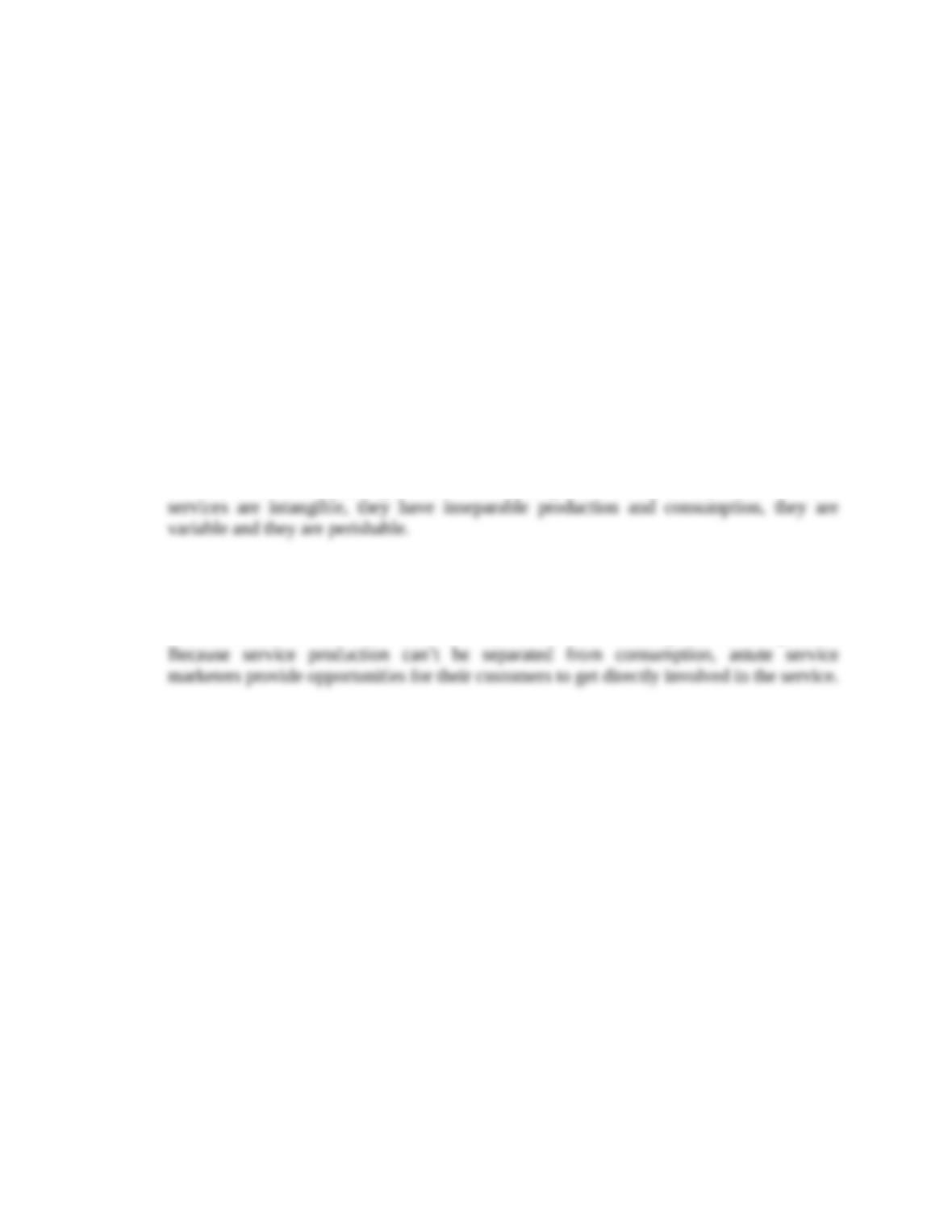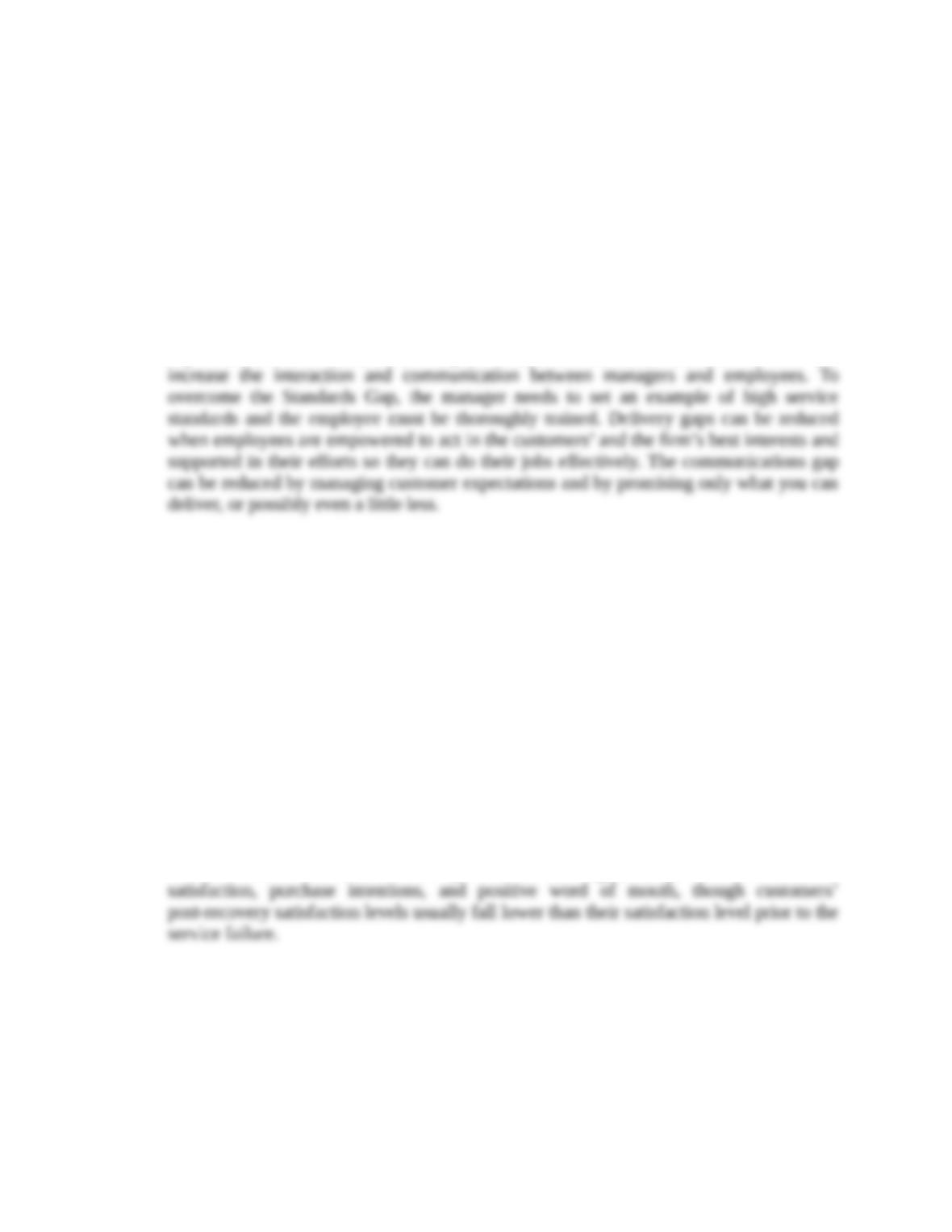LO2 Discuss the four gaps in the Service Gap Model.
The knowledge gap reflects the difference between customers’ expectations and the firm’s
perception of those customer expectations. Firms need to match customer expectations with
actual service through research. The standards gap is the difference between the firm’s
perceptions of customers’ expectations and the service standards it sets. Appropriate service
standards and measurements of service performance help close this gap. The delivery gap is the
difference between the firm’s service standards and the actual service it provides to customers.
Closing this gap requires adequate training and empowerment of employees. The communication
gap refers to the difference between the actual service provided to customers and the service that
the firm’s promotion program promises. Firms close the communications gap by managing
customer expectations and promising only what they can deliver.
LO3 Examine the five service quality dimensions.
First, reliability refers to whether the provider consistently provides an expected level of service.
Second, responsiveness means that the provider notes consumers’ desires and requests and then
addresses them. Third, assurance reflects the service provider’s own confidence in its abilities.
Fourth, empathy entails the provider’s recognition and understanding of consumer needs. Finally,
tangibles are the elements that go along with the service, such as the magazines in a doctor’s
waiting room.
LO4 Explain the zone of tolerance.
The area between customers’ desired service and the minimum level of service they will accept is
the zone of tolerance. It is the difference between what the customer really wants and what he or
she will accept before going elsewhere. Firms can assess their customers’ zone of tolerance by
determining the desired and ¬expected level of service for each service ¬dimension, their
perceptions of how well the focal service performs and how well a competitive service performs,
and the importance of each service quality dimension.
LO5 Identify three service recovery strategies.
In a best-case scenario, the service never fails. But some failures are inevitable and require the
firm to make amends to the customer by: (1) listening carefully and involving the customer in the
service recovery; (2) finding a fair solution to the problem that compensates the customer for the
failure and follows procedures the customer believes are fair; and (3) resolving the problem
quickly.



